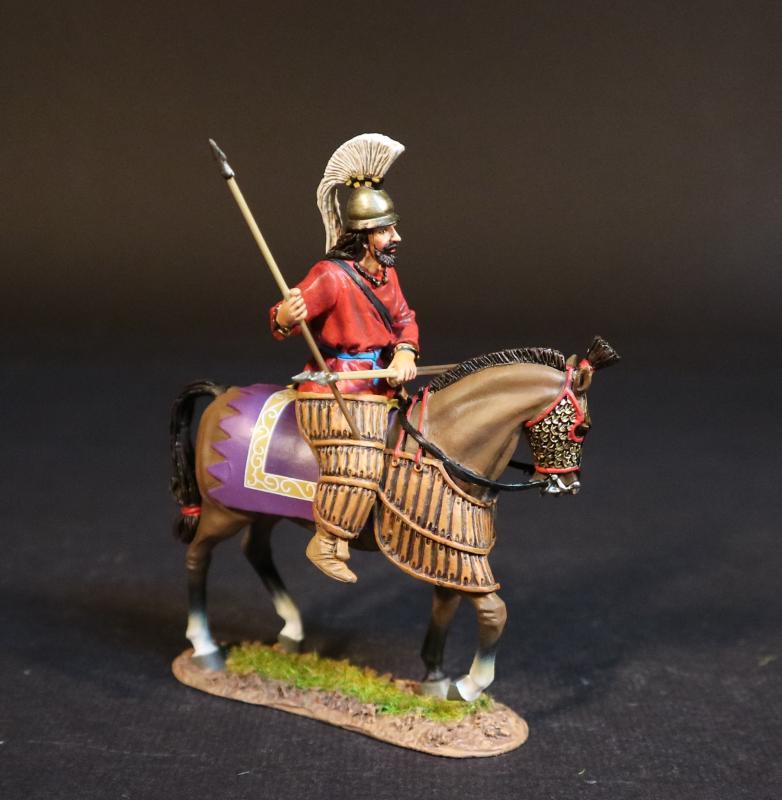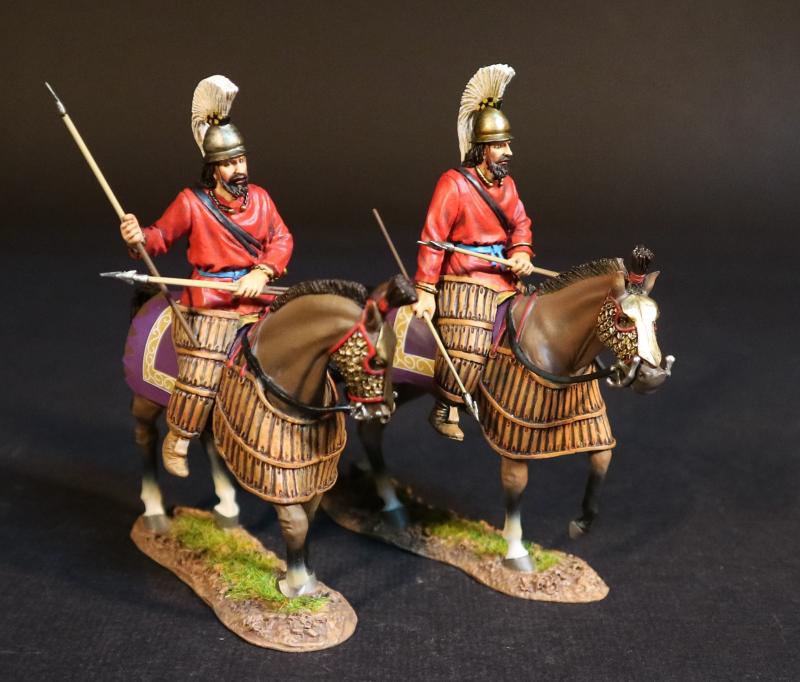Cyrus the Youngers' Bodygard, Persian Heavy Cavalry, The Achaemenid Persian Empire, Armies and Enemies of Ancient Greece and Macedonia--single mounted figure with two javelins
$108.00
Item Number: AP-60
Cyrus the Youngers' Bodygard, Persian Heavy Cavalry, The Achaemenid Persian Empire, Armies and Enemies of Ancient Greece and Macedonia--single mounted figure with two javelins
The Achaemenid Persian Empire, 550-330
ARMIES AND ENEMIES OF GREECE AND MACEDONIA: THE ACHAEMENID PERSIAN ARMY
PERSIAN HEAVY CAVALRY
The Achaemenid Empire c. 550–330 BCE, also called the First Persian Empire, was an ancient Iranian empire based in Western Asia founded by Cyrus the Great. Ranging at its greatest extent from the Balkans in the west to the Indus Valley in the east, it was larger than any previous empire in history, spanning 5.5 (or 8) million square kilometers. Incorporating various peoples of different origins and faiths, it is notable for its successful model of a centralised, bureaucratic administration (through satraps under the King of Kings), for building infrastructure such as road systems and a postal system, the use of an official language across its territories, and the development of civil services and a large professional army. The empire's successes inspired similar systems in later empires
The Achaemenid Empire encompassed a vast and diverse range of territories, from Anatolia and Egypt to the Indus Valley. This diversity was reflected in its cavalry, which included units from various ethnic groups such as Medes, Persians, Bactrians, Scythians, and Sakas.
Each group brought its own unique style of cavalry warfare, contributing to the overall effectiveness of the Achaemenid cavalry.
CYRUS THE YOUNGERS’ BODYGUARD
Based on Xenophon’s descriptions of Cyrus’ bodyguard at the Battle of Kounaxa in 401BCE, they are described as having a cuirass under the red tunic, and a bronze helmet. The general appearance of recent illustrations are inspired by a relief in Turkey, which shows a Persian cavalryman with a crested pilos helmet fighting a Greek Hoplite.
Another part of the relief shows bronze horse’s head-armour, and horse’s breast armour of embossed bronze or leather.
It has also been described that the guard wore matching thigh and leg guards.
Due to be released in OCTOBER 2025.

